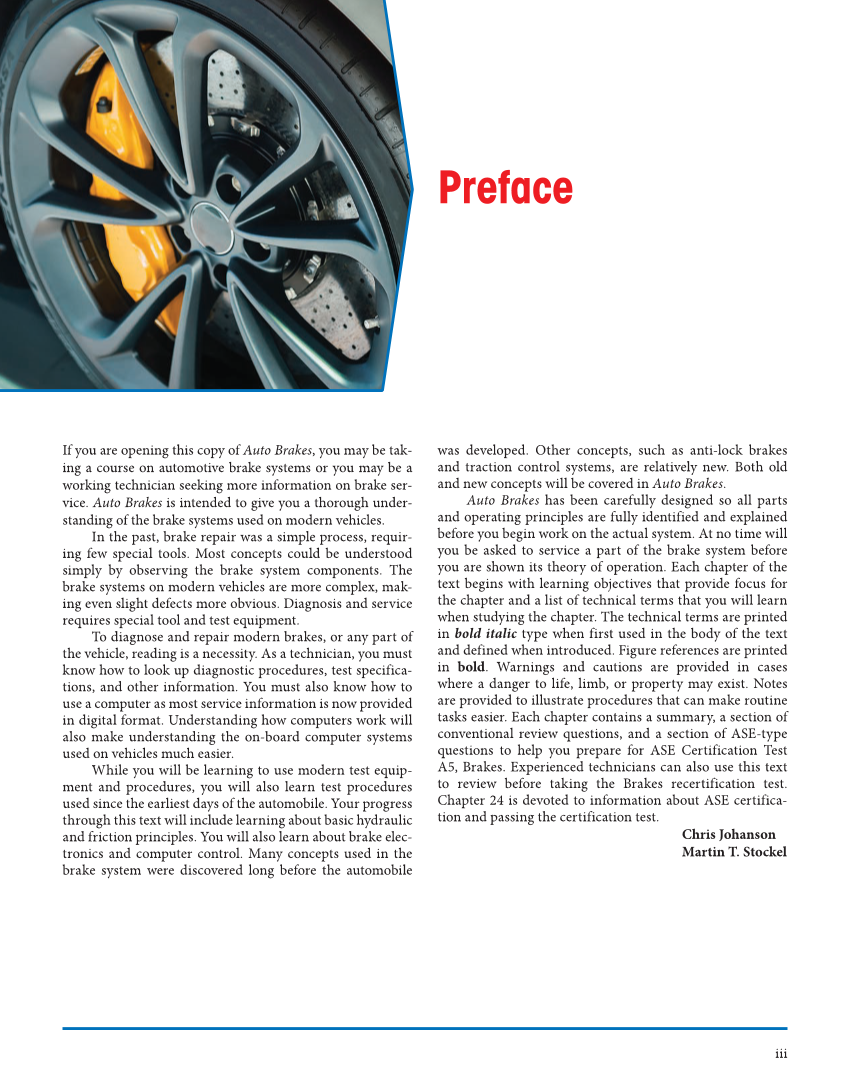iii Preface If you are opening this copy of Auto Brakes, you may be tak- ing a course on automotive brake systems or you may be a working technician seeking more information on brake ser- vice. Auto Brakes is intended to give you a thorough under- standing of the brake systems used on modern vehicles. In the past, brake repair was a simple process, requir- ing few special tools. Most concepts could be understood simply by observing the brake system components. The brake systems on modern vehicles are more complex, mak- ing even slight defects more obvious. Diagnosis and service requires special tool and test equipment. To diagnose and repair modern brakes, or any part of the vehicle, reading is a necessity. As a technician, you must know how to look up diagnostic procedures, test specifica- tions, and other information. You must also know how to use a computer as most service information is now provided in digital format. Understanding how computers work will also make understanding the on-board computer systems used on vehicles much easier. While you will be learning to use modern test equip- ment and procedures, you will also learn test procedures used since the earliest days of the automobile. Your progress through this text will include learning about basic hydraulic and friction principles. You will also learn about brake elec- tronics and computer control. Many concepts used in the brake system were discovered long before the automobile was developed. Other concepts, such as anti-lock brakes and traction control systems, are relatively new. Both old and new concepts will be covered in Auto Brakes. Auto Brakes has been carefully designed so all parts and operating principles are fully identified and explained before you begin work on the actual system. At no time will you be asked to service a part of the brake system before you are shown its theory of operation. Each chapter of the text begins with learning objectives that provide focus for the chapter and a list of technical terms that you will learn when studying the chapter. The technical terms are printed in bold italic type when first used in the body of the text and defined when introduced. Figure references are printed in bold. Warnings and cautions are provided in cases where a danger to life, limb, or property may exist. Notes are provided to illustrate procedures that can make routine tasks easier. Each chapter contains a summary, a section of conventional review questions, and a section of ASE-type questions to help you prepare for ASE Certification Test A5, Brakes. Experienced technicians can also use this text to review before taking the Brakes recertification test. Chapter 24 is devoted to information about ASE certifica- tion and passing the certification test. Chris Johanson Martin T. Stockel
